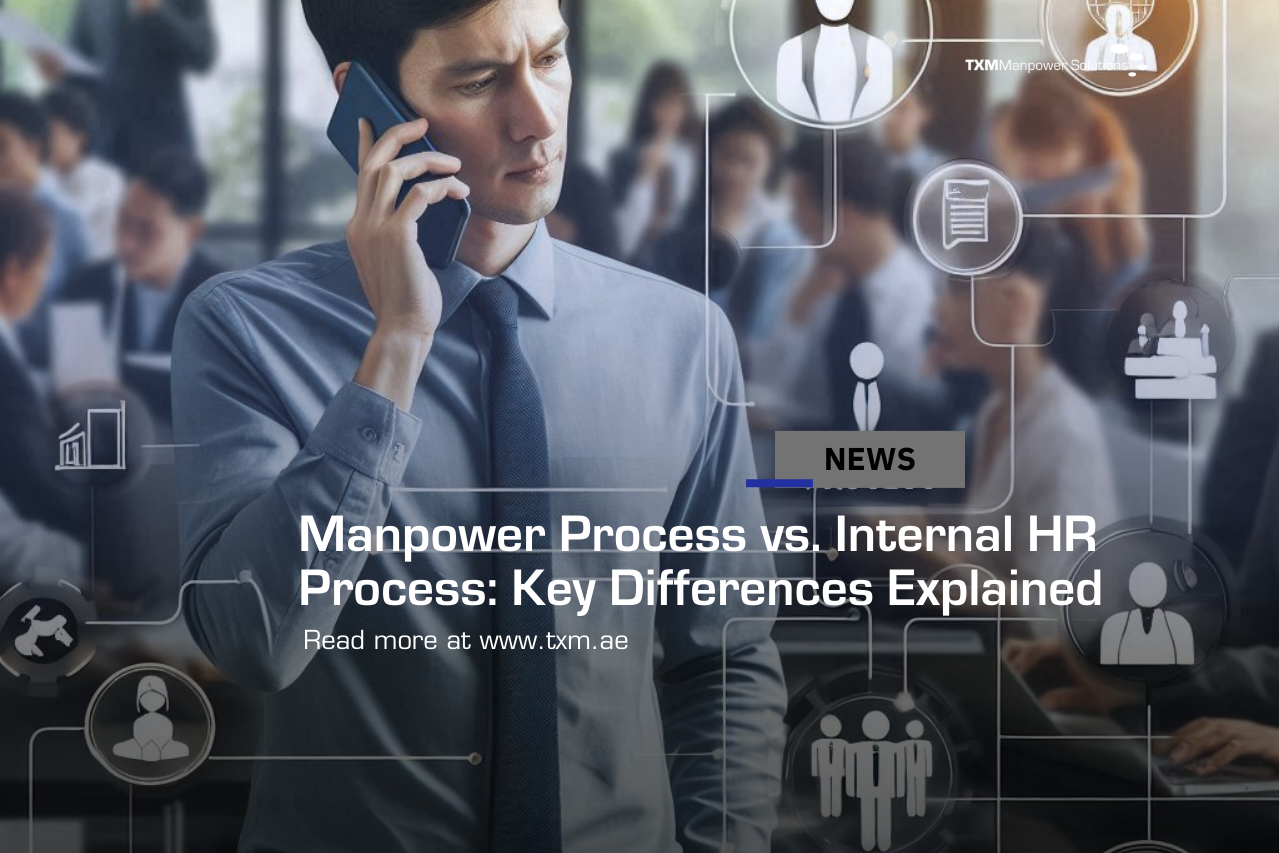
Manpower Process and Internal HR Process
Term | Definition |
|---|---|
Manpower Process | A strategic approach to planning for an organization's future staffing needs. It involves analyzing the current workforce, forecasting future demand, and creating strategies to address gaps to ensure that the organization has the right number of employees with the required skills to meet business objectives. |
Internal HR Process | The set of operational HR activities and functions that support employee management and organizational goals. It encompasses recruitment, onboarding, training, performance management, compensation, benefits administration, compliance with labor laws, and employee relations to maintain smooth HR operations and foster a positive workplace environment. |
.png)
Aspect | Manpower Process | Internal HR Process |
|---|---|---|
Purpose | Forecasts and plans for future staffing need to ensure the organization has the right number of employees with the right skills to meet business objectives. | Encompasses the day-to-day operations of managing employees, ensuring smooth HR operations and a positive workplace environment. |
Scope | Strategic focus involving the analysis of the current workforce, forecasting future needs, and developing strategies to address those needs. | Operational focus, dealing with recruitment, training, compensation, benefits, and compliance. Manages employees' day-to-day needs. |
Focus | Planning and strategy, aiming to predict future staffing needs, identify gaps, and create strategies to address them. Often long-term and aligns with broader business goals. | Operational excellence and employee engagement. Focuses on recruitment, onboarding, performance management, and compliance. Typically more immediate and ongoing. |
Interactions | Involves other strategic functions within the organization, such as business development and finance, to align workforce planning with business goals. | Interacts with employees and managers to ensure efficient HR operations. Involves communication and relationship-building to maintain a positive workplace culture. |
Desired Outcomes | Optimal workforce allocation, cost savings, improved productivity, and reduced turnover. Ensures the right talent to meet business objectives. | Consistent HR operations, a positive work environment, high employee engagement, and compliance with labor laws. Creates a productive and harmonious workplace. |


